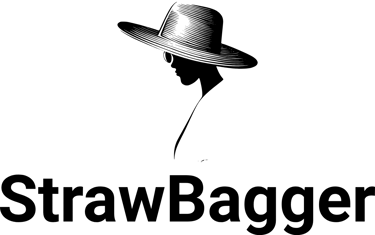Adopt a "strawbagger mindset!"

Linen
Linen: Its Benefits and Uses.
Linen is a natural fabric made from the fibers of the flax plant (Linum usitatissimum). Linen is one of the oldest and most eco-friendly fabrics, known for its sustainability, durability, and timeless appeal. Sources: (LinenLife)
Benefits:
Low Environmental Impact: Requires less water and fewer pesticides compared to cotton.
Durable: Strong fibers that become softer with each wash.
Breathable: Excellent moisture-wicking properties, keeping the wearer cool.
Biodegradable: Naturally decomposes, reducing environmental waste. Sources: (Vogue Business, Ninghow)
Uses:
Summer clothing, like dresses and shirts.
Home textiles, including tablecloths and curtains.
Accessories such as scarves and bags.
Let's take a Closer Look at Linen

1. What is Linen?
Linen is a natural fiber made from the stalks of the flax plant (Linum usitatissimum), one of the oldest cultivated crops in the world.
The transformation from flax to linen involves retting (a microbial process that loosens the fibers), breaking, and spinning — typically done with minimal chemical processing.
Linen’s history dates back thousands of years, with evidence of linen textiles found in ancient Egypt. Its enduring appeal comes from its durability, natural feel, and breathable qualities.
2. Environmental Benefits
Low Water Usage: Flax requires far less water to grow than cotton. In many regions, it can thrive with natural rainfall alone, significantly reducing the strain on freshwater resources.
Minimal Chemical Input: Flax farming typically involves fewer pesticides and fertilizers than conventional cotton farming, leading to reduced soil and water contamination.
Carbon Sequestration: Flax plants absorb CO₂ from the atmosphere during their growth, making linen a climate-conscious choice. A hectare of flax can absorb several tons of CO₂ per year.
Biodegradability: Linen is 100% biodegradable and compostable at the end of its life, returning to the earth without leaving a lasting environmental footprint.
3. Durability and Longevity
Linen is known for its exceptional strength — about 30% stronger than cotton — making it one of the most durable natural fibers available.
Its resistance to pilling and stretching means garments and textiles made from linen maintain their structure and look over time.
Linen actually improves with age and washing, becoming softer without degrading in quality, which enhances its lifespan and reduces the need for frequent replacement.
4. Low-Waste Production
The entire flax plant can be used in the production process, reducing agricultural waste. For example:
Seeds can be used for linseed oil and animal feed.
Short fibers and shives can be used in insulation, paper, or composite materials.
Mechanical retting and dew retting (natural processes) reduce the need for harsh chemicals in processing.
5. Versatility and Comfort
Linen is extremely breathable and moisture-wicking, which makes it ideal for warm weather or active wear.
It has thermoregulating properties — keeping the wearer cool in the summer and warm in cooler weather.
Its natural texture offers a casual yet refined aesthetic, suitable for a wide variety of uses including:
Apparel (dresses, trousers, shirts)
Home textiles (curtains, bedding, tablecloths)
Upholstery and artisan crafts
6. Economic and Social Impact
Linen production is prominent in Europe (notably France, Belgium, and the Netherlands), where many farmers adhere to sustainable agricultural practices and strong labor regulations.
Choosing linen supports traditional flax-growing communities and helps sustain rural economies.
Flax can grow in poor-quality soil, providing an income source in areas not suited for many other crops.
7. Circular Fashion and Linen
Linen’s long lifespan and biodegradability make it an ideal fabric for circular fashion systems.
It’s suitable for resale, repair, and upcycling — a valuable feature in a fashion industry seeking to reduce waste.
Post-consumer linen garments can be shredded and recycled into new textiles or used as industrial rags and insulation.
8. Things to Consider
Wrinkling: Linen wrinkles easily due to its natural fiber structure — this is often considered part of its charm, but may not appeal to all consumers.
Cost: High-quality linen can be more expensive than cotton, but its durability often offsets the initial cost over time.
Certifications: Look for certifications like OEKO-TEX® or GOTS (for blends) to ensure sustainable and ethical production practices.
